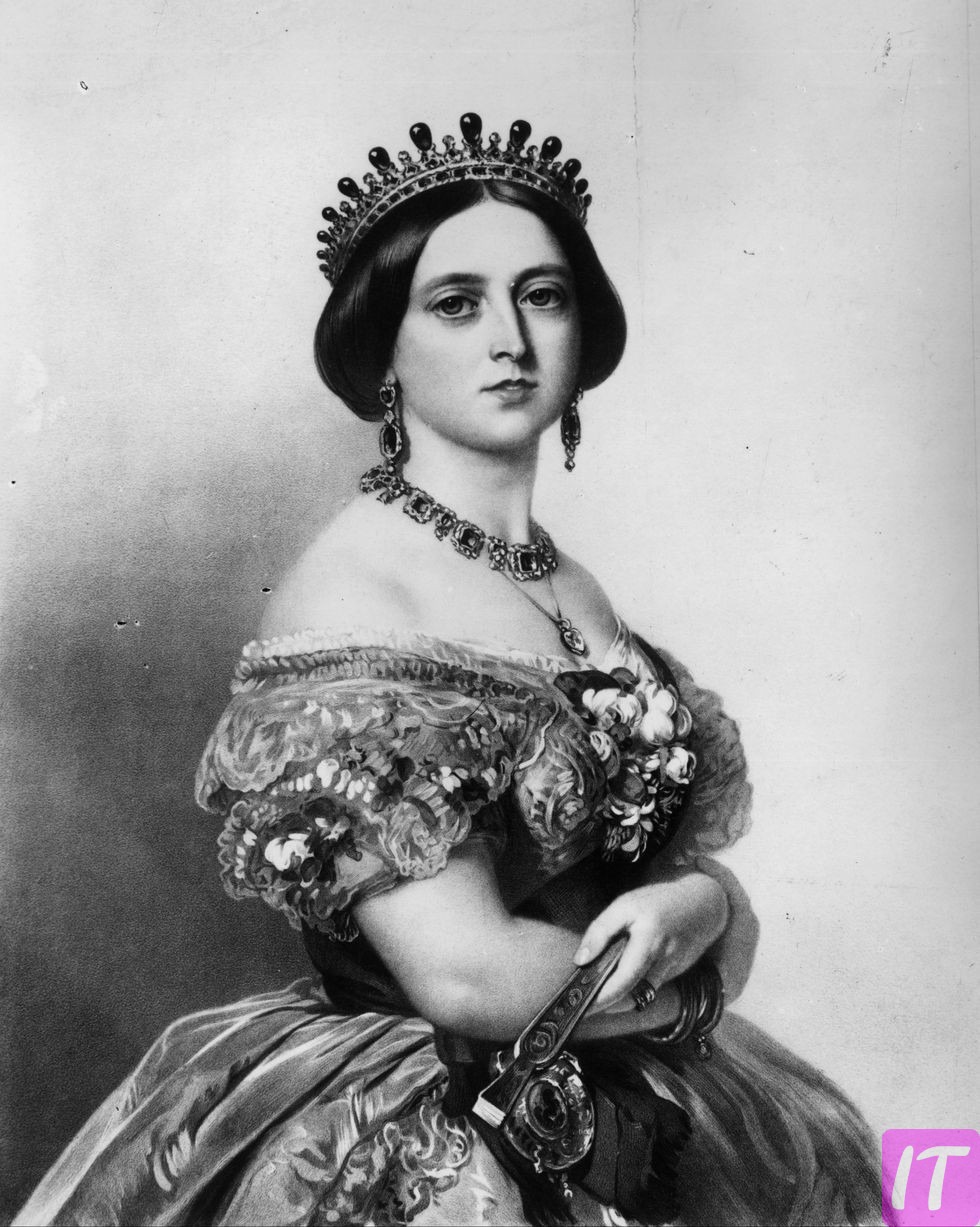Alexandrina Victoria, commonly known as Queen Victoria, was one of the most iconic monarchs in British history. Standing at a modest height of 4 feet 11 inches, she was often shorter than many of her predecessors and contemporaries. Her weight fluctuated over the years, but she was known to be quite petite in her earlier years and heavier in her later life.
Despite her small physical stature, Queen Victoria had a commanding presence and led an empire that spanned the globe. Her net worth, though difficult to precisely quantify, was significantly bolstered by her extensive royal properties and investments. Victoria’s personal details and aspects of her day-to-day life have fascinated historians for generations, shedding light on the private life of a public figure.
Professionally, Queen Victoria displayed an incredible work ethic and commitment to her nation’s affairs. Balancing the demands of her position with her role as a mother and wife showcased her multifaceted abilities. Her personal letters and diaries provide rich insights into her thoughts on governance, family, and the world around her.
Alexandrina Victoria, known as Queen Victoria, was 4 feet 11 inches tall and her weight varied over time. Her net worth was substantial due to royal properties. She was born on May 24, 1819, married Prince Albert, and had nine children. Her reign saw significant professional achievements and global influence.
Quick Info
Alexandrina Victoria was a notable queen in British history, commonly known as Queen Victoria. Here are some essential details about her, including her physical stats and personal information.
| Quick Info | Details |
|---|---|
| Height | 4 feet 11 inches |
| Weight | Varied, generally petite |
| Age | 81 years old at the time of death |
| Husband | Prince Albert |
| Net Worth | Significantly valuable due to royal properties and investments |
Full Biography
Alexandrina Victoria, known as Queen Victoria, was the queen of the United Kingdom. Her reign marked a period of great change and progress. Here are some detailed facts about her life and background.
| Information | Details |
|---|---|
| Full Name | Alexandrina Victoria |
| Nickname | Queen Victoria |
| Profession | Queen of the United Kingdom |
| Date of Birth | 24 May 1819 |
| Age | 81 years old at the time of death |
| Net Worth | Significantly valuable due to royal properties and investments |
| Height | 4 feet 11 inches |
| Weight | Varied, generally petite |
| Eye Color | Blue |
| Hair Color | Brown |
| Body Measurement | Not documented |
| Birthplace/Hometown | Kensington Palace, London |
| Nationality | British |
| Gender | Female |
| Ethnicity | Caucasian |
| Religion | Christianity (Church of England) |
| Sexuality | Heterosexual |
| Sun Sign (Zodiac Birth Sign) | Gemini |
| House Location | Balmoral Castle, Scotland; Windsor Castle, England |
| Wiki Page | Queen Victoria – Wikipedia |
| Facebook Link | Not available |
| Twitter Profile Link | Not available |
Physical Statistics
Queen Victoria, though small in stature, had a presence that filled the room. She was known for her distinctive appearance, including her eye and hair color. Here are some specific details about her physical characteristics.
| Information | Details |
|---|---|
| Height (Tall) | 4 feet 11 inches |
| Weight | Varied, generally petite |
| Profession | Queen of the United Kingdom |
| Eye Color | Blue |
| Shoe Size (UK) | Not documented |
| Hair Color | Brown |
Family
Queen Victoria had a close-knit family that played significant roles in her life. Her parents and siblings were influential in shaping her future. Here are some detailed facts about her family members.
| Information | Details |
|---|---|
| Father | Prince Edward, Duke of Kent and Strathearn |
| Mother | Princess Victoria of Saxe-Coburg-Saalfeld |
| Siblings | Half-sister: Princess Feodora of Leiningen |
Height, Weight, Net Worth, Personal Details, Income, Family, Professional Achievements
Queen Victoria, born Alexandrina Victoria, was a figure of immense influence and renown. This section will delve into various aspects of her life, providing detailed information on her physical attributes, financial status, family background, and professional milestones.
Height and Weight
Queen Victoria was known for her short stature. She stood at just 4 feet 11 inches tall, making her one of the shorter monarchs in British history. Despite her height, she had a towering presence and commanded respect in every room she entered.
As for her weight, it varied throughout her life. In her younger years, she was described as quite petite. However, in her later years, she gained some weight, which was common in the Victorian era.
Her physical appearance, including her height and weight, did not hinder her ability to rule. On the contrary, she was a powerful and influential leader. Her small stature was often overshadowed by her larger-than-life personality.
Net Worth
During her reign, Queen Victoria amassed significant wealth. Her net worth included royal properties, personal investments, and inheritance. It is challenging to pinpoint an exact figure, but she was undoubtedly one of the wealthiest individuals of her time.
The royal estates, such as Balmoral Castle and Windsor Castle, contributed substantially to her wealth. These properties were not only luxurious residences but also symbols of her power and influence.
Her financial status allowed her to live a life of luxury. It also enabled her to support numerous charitable causes and patronages, further solidifying her legacy.
Personal Details and Income
Born on 24 May 1819, Queen Victoria was named Alexandrina Victoria. She hailed from a prestigious lineage, being the daughter of Prince Edward and Princess Victoria of Saxe-Coburg-Saalfeld. Her upbringing was highly controlled, aimed at preparing her for future responsibilities.
Victoria’s income came from multiple sources. The Civil List provided her with an annual allowance approved by Parliament. Additionally, she benefited from revenues generated from her estates and royal investments.
Her personal details, including her love for family and dedication to duty, painted a picture of a complex yet committed leader. Her marriage to Prince Albert greatly influenced her, making him not just a husband but a trusted advisor.
Family
Queen Victoria’s family played a critical role in her life. Her marriage to Prince Albert was one of deep affection and mutual respect. They had nine children together, who were strategically married into various European royal families, earning Victoria the nickname “Grandmother of Europe.”
Her parents also influenced her greatly. Her father, Prince Edward, died when she was young, leaving her with mostly maternal influences. Her mother, Princess Victoria, was overprotective, which shaped Victoria’s strong-willed personality.
Victoria valued her family above all. Even though she was a strict and sometimes distant mother, she nurtured her children and prepared them for roles that would benefit the British Empire.
Professional Achievements
During her reign from 1837 to 1901, Victoria oversaw significant political and social changes. She became the emblem of the British Empire, which expanded to its peak during her tenure. Major reforms in education, industry, and social welfare were hallmarks of her administration.
She was the first British monarch to live at Buckingham Palace, firmly establishing it as the royal residence. Her reign also saw the establishment of the modern constitutional monarchy, balancing royal traditions with democratic governance.
Professional achievements aside, her presence was felt globally. She was a symbol of stability and progress, and her policies significantly shaped the modern world. Victoria’s influence extended far beyond her time, making her one of history’s most iconic figures.
Some Lesser Known Facts About Alexandrina Victoria
Queen Victoria is a well-known figure, but there are some lesser known facts about her that many people don’t realize. These facts provide a deeper insight into her personality and reign.
- Victoria was only 18 years old when she became queen.
- She had a unique daily routine, which included writing in her diary every night.
- Victoria survived at least six assassination attempts during her reign.
- She was the first British monarch to ride a train.
- Victoria proposed to Prince Albert; it was not the other way around.
- She was an accomplished artist and loved sketching and painting.
- Despite her stern public image, Victoria had a great sense of humor.
- One of her favorite hobbies was watching Scottish dancing.
- The famous “Victoria sponge cake” is named after her because she loved it.
- She was fluent in multiple languages, including German and French.
Her Influence and Legacy
Queen Victoria’s influence extended far beyond the borders of the United Kingdom. She ruled during a time of great change, known as the Victorian Era. Her decisions and policies helped shape modern Britain.
Victoria’s reign saw the expansion of the British Empire. At its peak, it was said that the sun never set on the British Empire. This brought wealth and power to Britain, but also introduced challenges like managing different cultures and regions.
One of the most important aspects of her legacy is the shift towards a constitutional monarchy. Queen Victoria worked closely with Prime Ministers and Parliament. This created a balance between traditional royal authority and democratic governance.
Victoria was also a patron of the arts and sciences. She supported advancements in technology and education. The Great Exhibition of 1851, which she opened, showcased innovations from around the world.
Her personal life was deeply interwoven with her public duties. The marriage of her children into various European royal families earned her the nickname “Grandmother of Europe.” This significantly influenced European politics and alliances.
Today, many places and institutions are named in her honor, from cities like Victoria in Canada to the prestigious Victoria Cross military decoration. Her legacy lives on, reminding us of a time when one woman’s influence had a lasting global impact.
Frequently Asked Questions
Alexandrina Victoria, widely known as Queen Victoria, was a pivotal figure in British history. Here, we explore some interesting questions and answers related to her life, reign, and personal details.
What was Queen Victoria’s height and weight?
Queen Victoria was relatively short, standing at just 4 feet 11 inches tall. Her weight fluctuated over the years; she was very petite in her younger days and gained some weight as she grew older.
Despite her small stature, Victoria exerted immense influence and authority. Her physical appearance never hindered her ability to lead and shape an empire.
How wealthy was Queen Victoria?
Queen Victoria had a significant net worth, primarily due to royal properties and inheritances. Understanding her exact net worth is challenging, but she was one of the wealthiest individuals of her era.
Her wealth included Balmoral Castle, Windsor Castle, and other estates. These assets contributed substantially to her financial status and helped her maintain a luxurious lifestyle.
Who were Queen Victoria’s parents and siblings?
Queen Victoria’s father was Prince Edward, Duke of Kent and Strathearn, and her mother was Princess Victoria of Saxe-Coburg-Saalfeld. She was born into a prestigious royal family that significantly influenced her upbringing.
Victoria had one half-sibling, Princess Feodora of Leiningen, from her mother’s previous marriage. The family dynamics played a crucial role in shaping her early life and reign.
What were some of Queen Victoria’s major professional achievements?
Queen Victoria’s reign saw the expansion of the British Empire, making it the largest empire at the time. Her tenure is also marked by significant political, social, and economic reforms.
She played a key role in establishing the modern constitutional monarchy. Her collaboration with Prime Ministers and Parliament helped balance royal authority with democratic principles.
Did Queen Victoria have any affairs during her reign?
There are no substantial records or credible evidence to suggest that Queen Victoria had any extramarital affairs. She was deeply devoted to her husband, Prince Albert, until his death, which profoundly affected her.
Her mourning for Prince Albert was intense and long-lasting. Queen Victoria wore black for the rest of her life after his passing, showcasing her unwavering loyalty.
Conclusion
Queen Victoria’s legacy is undoubtedly one of significant historical importance. From her influence on the expansion of the British Empire to her personal commitment to family and tradition, her impact is still felt today. Her leadership has left a lasting mark on both the United Kingdom and the world.
The details of her life, from her height and weight to her net worth and family ties, paint a picture of a complex and enduring monarch. Her professional achievements and dedication continue to be a source of inspiration. Queen Victoria truly embodied the spirit of a transformative era.







